Was Noah’s Ark Found? Remains May Have Actually Been Discovered
Noah’s Ark is a biblical tale that is as old as time. The story centers around God’s decision to flood Earth entirely with rain, in order for it to return to its pre-creation state. Before going through with his plan, however, God saved Noah and instructed him to assemble an ark so that he, his family, and the animals from each pair could survive the flood. Like the Great Pyramids of Egypt and the biblical truths uncovered on Mount Kilimanjaro, the story of Noah’s Ark harbors long-kept secrets
Although many believe the Noah’s Ark story is simply an ancient myth and a foreboding warning about God’s wrath, a team of scientists embarked on a journey to see if the story may actually be rooted in truth and if the Ark ever existed.
It’s More Than A Story According To Some Scientists
As with most biblical tales, the history of Noah’s Ark was thought to be a historical fact by many, up until the close of the 1700s.

Source: Fine Art Images/Heritage Images/Getty Images
The Earth’s creation story, as told in the Bible, has largely been denied as a factual explanation for how the Earth came to be. Even though this belief was floating around, a few dubious scientists have come to believe that Noah’s Ark may have actually been real and that it’s not just a fictional story.
The Legend Behind Mount Ararat
As told in the Bible’s recounting of the famous flood, after the rainfall stopped and the water started to recede, Noah allegedly landed the Ark at the “mountains of Ararat.” To know if the water had settled down, he sent out a dove and raven.

Source: Fine Art Images/Heritage Images/Getty Images
After he was surely confident that the water had receded, Noah unlatched the doors of his Ark and set the animals free to thrive again in the new world. In 2009, with the location of Ararat in mind, an expedition team of scientists went to see if they could uncover any traces of archeological evidence.
Mount Ararat Is A Respected Location
As one of the tallest peaks in Turkey, Mount Ararat is located in the east, close proximity to its border with Iran and Armenia. Ararat is considered an honored and sacred mountain, seeing as its part of Turkey’s national symbol. It’s also an integral part of Armenia’s coat of arms.
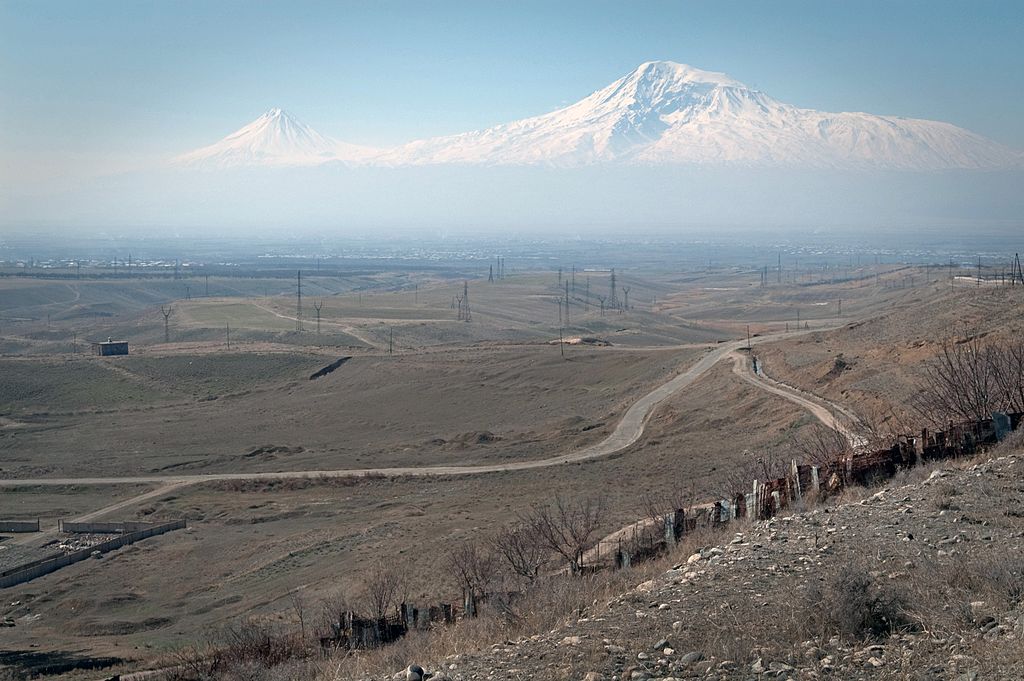
Source: Justyna Mielnikiewicz/Getty Images
At a peak of 16,584 feet, the top of the mountain is engulfed with snow year-round. 1829 was the earliest recorded exploration.
Marco Polo’s Connection To Mount Ararat
The distinguished Venetian traveler and explorer, Marco Polo, wrote in his book, The Adventures of Marco Polo, how he scouted the “mythical” peak of Ararat. It wasn’t really until the 19th century that explorers started to do their own research and make observations about the mountain.

Source: Archive Photos/Getty Images
Dr. Friedrich Parrot is the 1829 explorer who scaled the mountain. He explained that its sacredness is why “no human being is allowed to approach it.” 50 years later, however, explorer James Bryce made an incredible discovery that changed everything.
James Bryce Tried To Summit Ararat
In addition to being an explorer, Bryce was also an Oxford Civil Law professor, historian, statesman, and diplomat. He climbed the mountain in 1876, searching for physical evidence about the Noah’s Ark story from the Bible.

Source: Bettmann / Contributor via Getty Images
Although Bryce didn’t reach the mountain’s peak, he did make it just above the tree line where he saw the snow slopes. That was where he made the accidental discovery that lent some proof to the Bible’s original story.
Bryce Found A Wooden Beam
Even though Bryce was clearly hoping to discover any evidence relating to the Ark, he wasn’t too confident about what he might find. However, what he did find left him speechless.
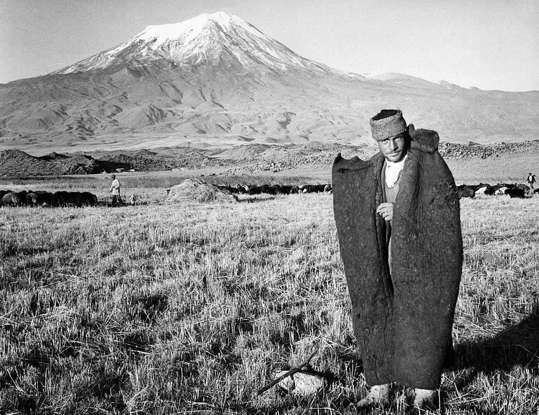
Source: Reitz/ullstein bild via Getty Images
He came across an ancient beam on the snowy slopes of Mount Ararat. It, quite possibly, could have been remnants of the Ark, but, much to his disappointment, the beam was much too big to have been transported all the way down the mountain. When he went back to England, the news of this discovery transformed into research madness.
A Persuasive Photo
While people were enthusiastic about Bryce’s discovery of the wooden beam, this evidence didn’t even scratch the surface of convincing experts it was from Noah’s Ark. Additionally, other explorers claimed they found other forms or proof, even the entire boat, but there still wasn’t any tangible evidence.
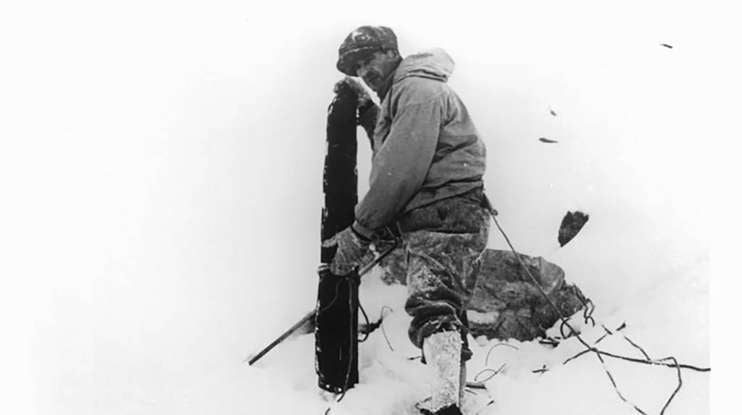
Source: Sun Classic Pictures/Getty Images
Another expedition was on the horizon in 1960. A man named Ron Wyatt took a photo of an 18-mile area of the peak. In the image, there was something that sort of resembled a boat, so yet another expedition was in line.
Some Similarities
According to the story of Noah’s Ark, the Ark supposedly rested in the Ararat mountains. Although, there isn’t one primary peak, but many mountaintops. In addition, certain biblical scholars bantered that Ararat was the name of the whole region, not just the mountain.

Source: Culture Club/Bridgeman via Getty Images
In eastern Turkey’s Durupinar site, a big structure can be found 18 miles south of the modern Ararat. Even more intriguing is that it seems that it could be an ark. Ron Wyatt wanted to prove that it indeed was.
A More In-Depth Look
In 1985, Wyatt was joined in his expedition by David Fasold, an ex-United States Merchant Marine Officer and salvage expert. Geophysicist John Baumgardner joined them. Pretty convinced that the site was the precise location of the Ark, Fasold believed they would be able to discover it using a device called a “frequency generator.”

Source: Heritage Art/Heritage Images via Getty Images
The scan from the device detected that formation in the earth was about 538 feet, which was close to the estimated measurements of the biblical ark (an estimated 515 feet using ancient Egyptian cubits).
There Were Possible Anchor Stones
Fasold and Wyatt searched the area for any telling signs of the Ark, but they found something they weren’t anticipating. Boulders with ancient carvings were discovered, and, according to Fasold, the boulders were anchor stones (or, drogues) that may have been used to stabilize massive ships during a storm.

Source: Fine Art Photographic Library/CORBIS/Corbis via Getty Images
Despite this exciting discovery, the boulders were found miles away from any bodies of water, but Fasold still felt confident they were on the Ark. Many remained skeptical that the story was a mere myth and nothing more.
Many Still Had Doubts
Even though Fasold and Wyatt’s case was compelling, certain geologists, archaeologists, geophysicists, and other experts immediately denied their claims. That denial came as a response to the “frequency generator.”
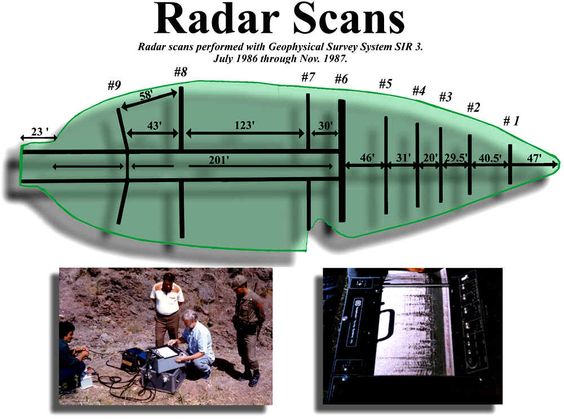
Source: Ron Wyatt/divinerevelations.info
The generator, as many suspected, was nothing more than a “sounding rod” with some additional equipment. They also stated that the drogue stones were merely local gravestones in the surrounding area. As a result, the theory about the Durupinar site was rejected and forgotten.
A Dated Concept
The idea of a theoretical ancient flood is as old as human culture and is still alive in different areas and religions. In the Babylonian Epic of Gilgamesh and Hindu Satapatha Brahmana, Utnapishtim, and Manu both built boats after being warned about a catastrophic flood by the gods.
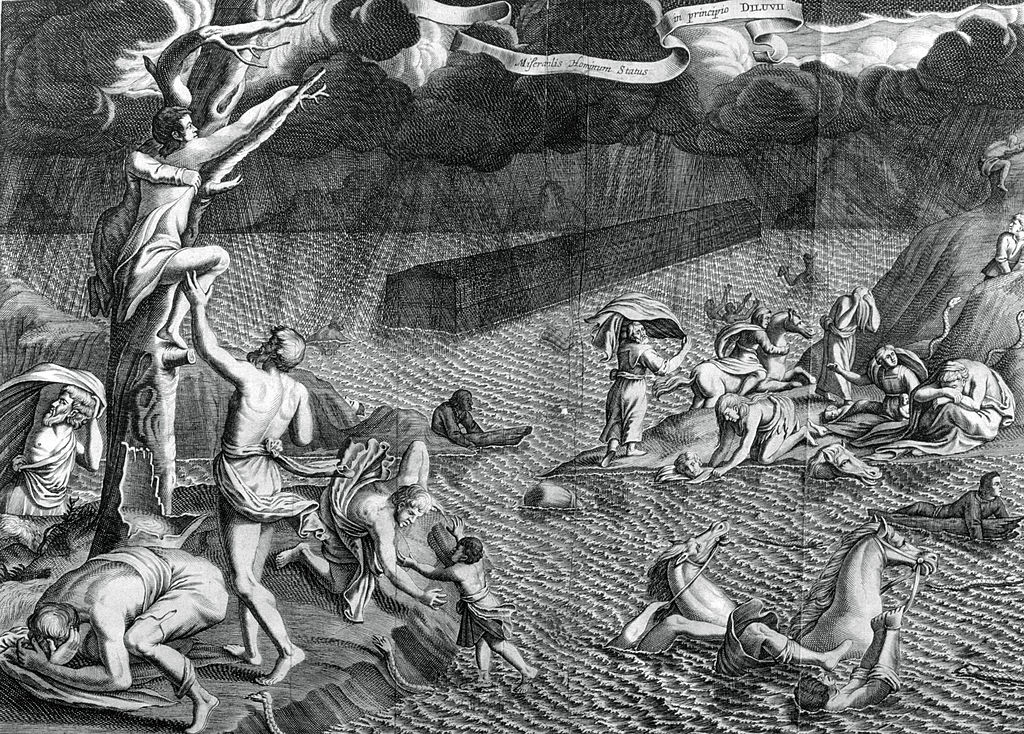
Source: Art Media/Print Collector/Getty Images
There are similar stories in the Sumerian Epic of Ziusurda, Plato’s works, and Chinese and North American Hopi cultures. Even though the reason behind the flood varied depending on the culture, it was agreed upon that, at one point, the earth was covered in water.
The Epic of Gilgamesh
The Epic of Gilgamesh is a timeless piece about Gilgamesh, the hero of the story who reigns as the king of Uruk. The epic details Gilgamesh’s life and how he is said to be one part mortal and two parts divine.
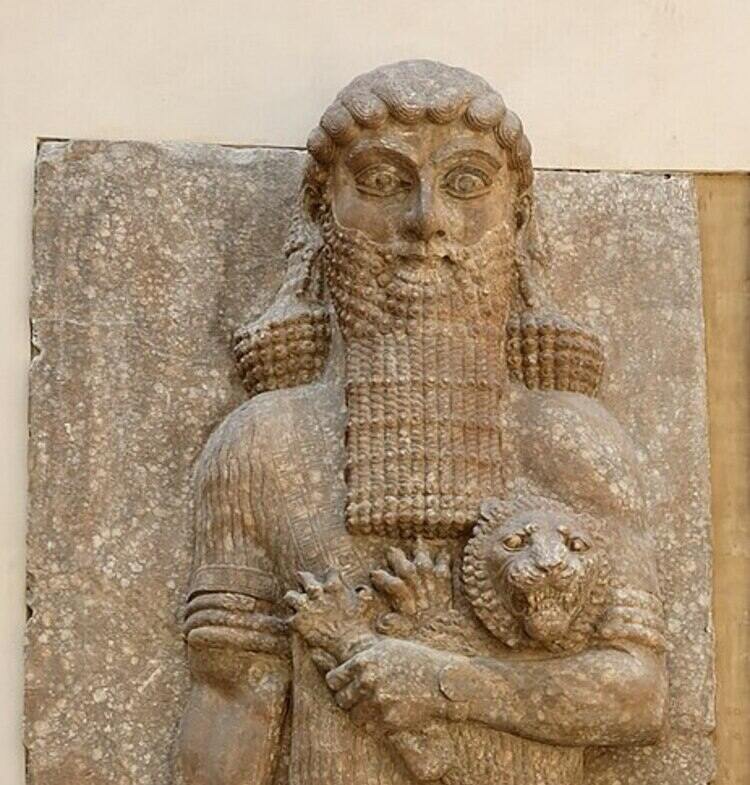
Source: Wikipedia
While the epic is a very exciting story, one of its central themes revolves around Gilgamesh’s search for immortality, which links to one of the many versions of the flood.
Gilgamesh’s Search For Eternal Life
The 4,000-year-old poem Epic of Gilgamesh contains one of the oldest legends about an ancient flood. The poem was inscribed on stone tablets and was a story about King Gilgamesh’s search for eternal life.
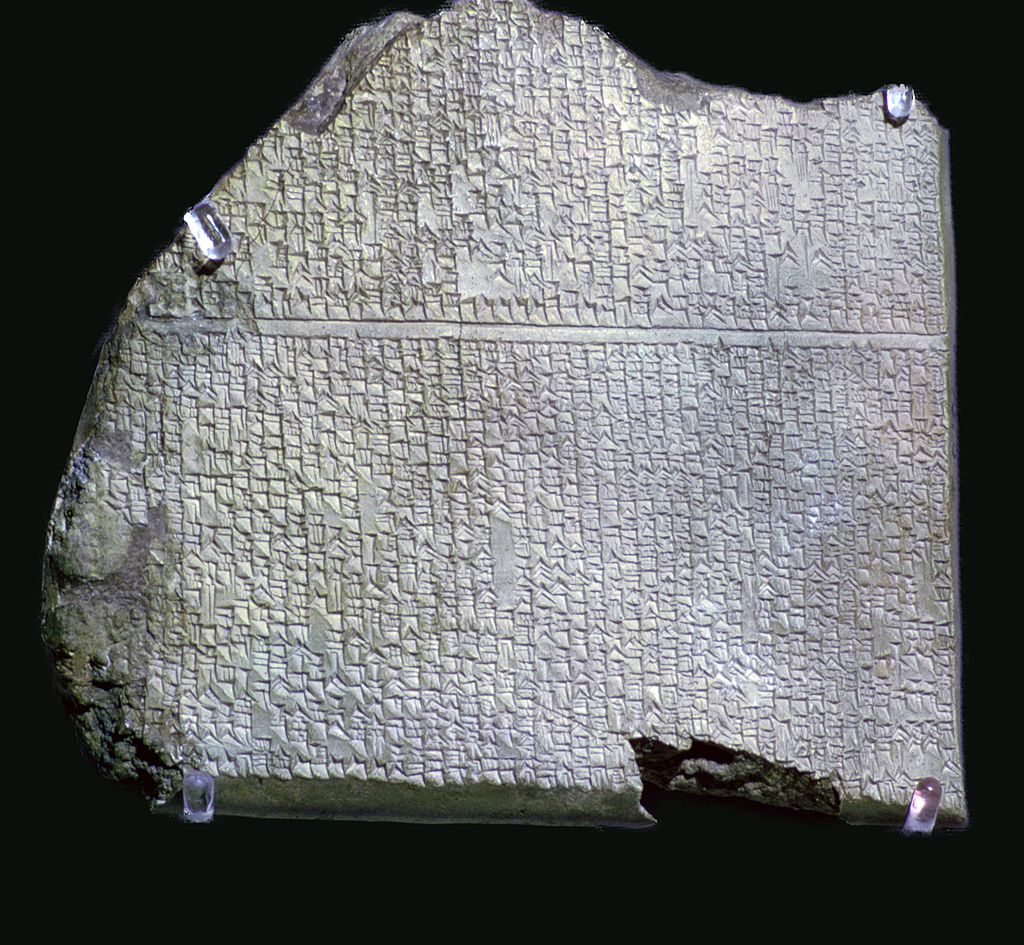
Source: CM Dixon/Print Collector/Getty Images
On his journey, he faced men, monsters, gods, and, most profoundly, Utnapishtim, an elderly man who claimed he had found the secret to everlasting life. Desiring to learn the same secret, Gilgamesh enveloped himself in listening to Utnapishtim’s tale.
Utnapishtim Warns Gilgamesh
Gilgamesh was warned by Utnapishtim that the god, Ea, wanted to flood the earth to halt humans from overly replicating. He also warned Utnapishtim to construct a large boat, and Utnapishtim listened to his advice.
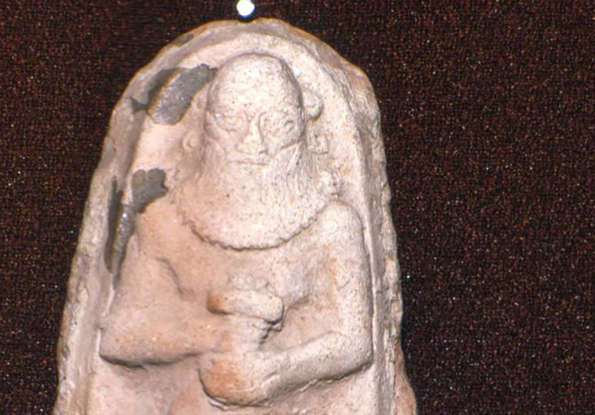
Source: CM Dixon/Heritage Images/Getty Images
On the boat, he brought his family, and helpers, as well as “all the animals on the field.” Apparently, not too long after Utnapishtim finished the project, the sky opened up and produced a storm that cleared away everything in its path. Despite this, Utnapishtim stayed alive.
They Remained Safe
As the storm battered on around them, Utnapishtim and his family stayed safe on the ship they had been instructed to build. When the rains finally let up, Utnapishtim opened a hatch and released a dove and raven to see if any land was close by. Utnapishtim eventually landed his ship on the side of a mountain.

Source: Stock Montdage/Getty Images
This tale was inscribed on stone tablets, and even though the physical ones had been missing for millennia, the tale is popular across Babylon and other parts of the world.
Satapatha Brahmana
The Satapatha Brahmana, an ancient Hindu text from the Vedic period, is another version that bears similarities with the main idea of the flood.

Source: Wikipedia
The Satapatha Brahmana not only holds a major place within the Shukla Yajurveda-a guide to Vedic ceremonies that offers detailed explanations and rituals but also comprises various collections of prose texts, including one that details their version of the flood narratives through the story of Manu.
Manu's Story
The story follows Vaivasvata Manu, detailing how the world was filled with corruption and evil, and it caused Lord Vishnu to intervene. With the aim to protect and restore righteousness to the world, he took up the form of a fish and then appeared before Manu. The fish then instructed him to build a boat because a great flood would cover the world.
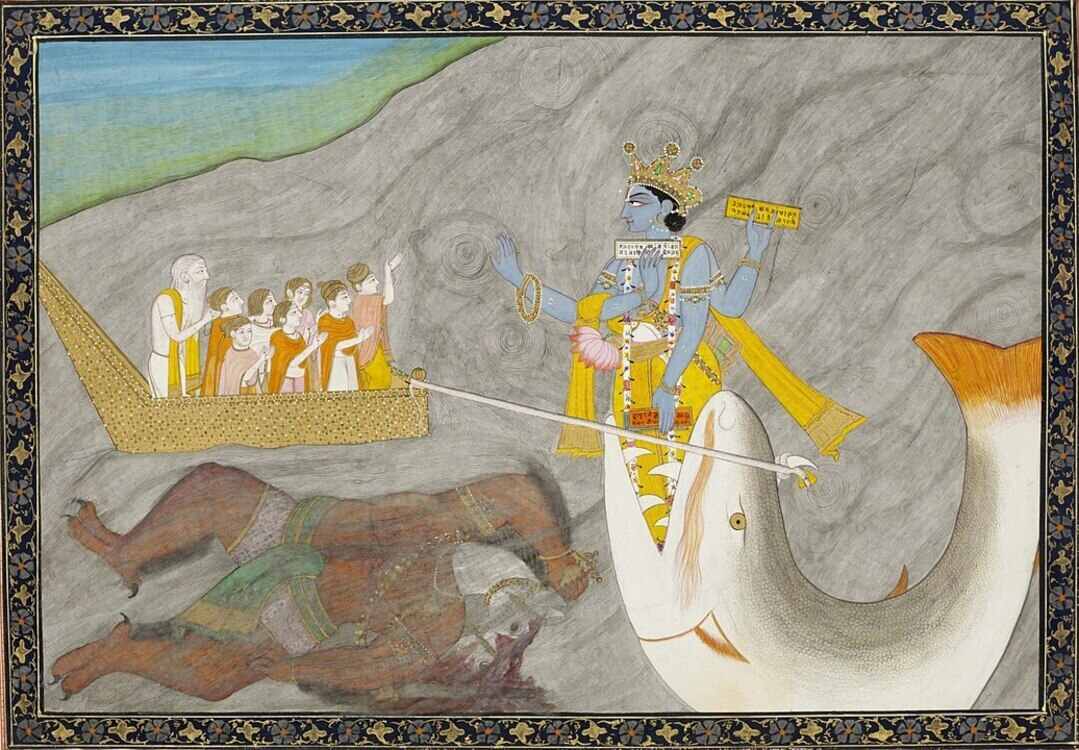
Source: Wikipedia
Part of his instructions included that he take along with him seven sages, one of each animal species, all plant seeds, and the sacred Vedas.
The Myth of Deucalion and Pyrrha's Flood
The ancient Greek myth of Deucalion and Pyrrha’s flood is also another popular version of the worldwide flood myth of Noah’s Ark. In this case, the myth is set during the Bronze Age. Nonetheless, it similarly depicts an immoral and corrupt world that eventually invoked Zeus’s wrath, the king of gods.

Source: Pinterest
It details that Zeus then unleashed a flood that covered the world, ending all life. However, the heroic couple, Deucalion and Pyrrha, managed to survive and became the progenitors of a new era.
The Ark Goes To Hollywood
The tale of the catastrophic flood and Noah’s Ark is accessible in cultures all around the globe. Even though some versions have minor differences, the general premise is the same.
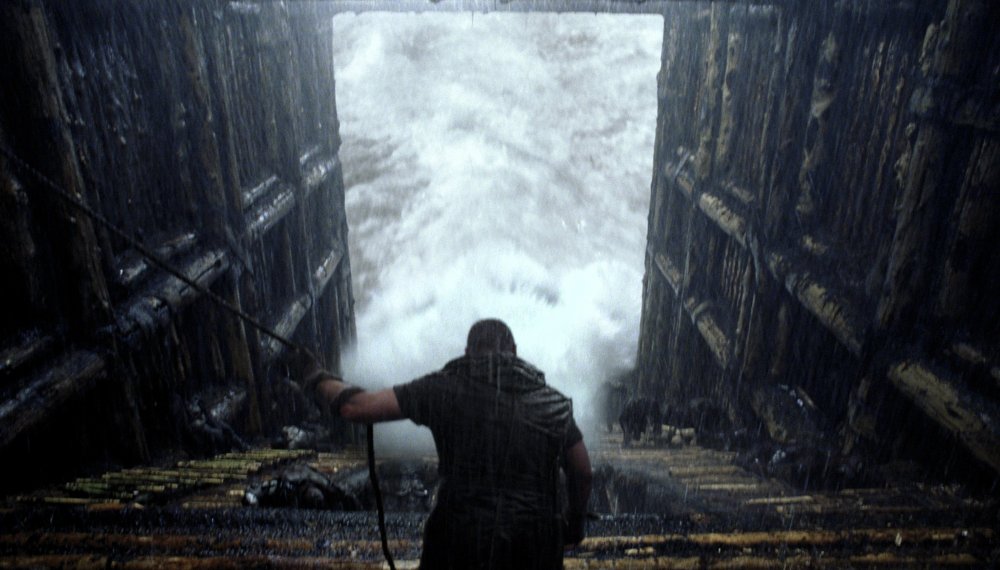
Source: bfi.org.uk
The story has been told and passed down through generations and generations in ancient times, but also in contemporary times, as well. 2014’s epic Noah, directed by Darren Aronofsky and starring Russell Crowe, is an example of a modern (yet Hollywood-ized) film, about the tale of Noah’s Ark. Although this probably is the most popular example, it isn’t the only film that’s been made about the story.
Primary Differences
While the tale of the Great Flood has been retold and recounted throughout history in different cultures, there are certain details that are different in each take, and, at times, even within the same story.
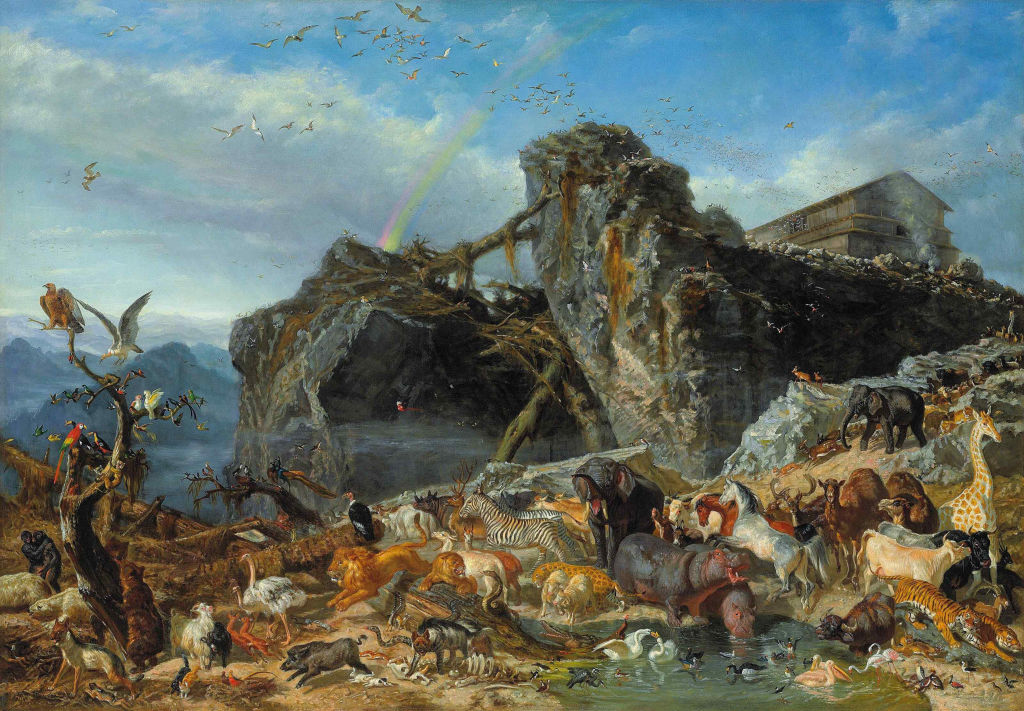
Source: Fine Art Images/Heritage Images via Getty Images
In the biblical passage, for example, Noah is apparently instructed to a pair of each animal onto the Ark. In another passage, it claims that Noah was supposed to take “seven pairs of every kind of clean animal” and “one pair of every kind of unclean animal,” and “seven pairs of every kind of bird.”
The Mountainous Trek
A joint Turkish-Hong Kong expedition happened in 2007 where members of the Noah’s Ark Ministries International (NAMI) made the journey up Ararat to find the lost ark.
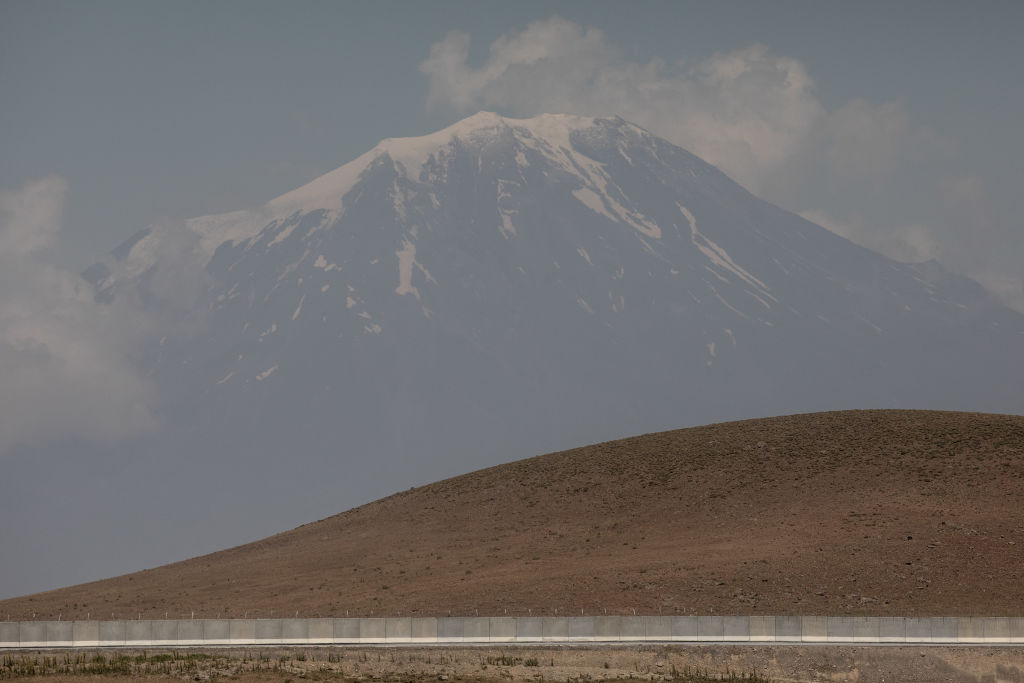
Source: Chris McGrath/Getty Images
Obviously, this was a treacherous adventure given that Ararat’s snowy hillsides and exposed landscape made the climb much more difficult. And, the conditions and weather weren’t the only two issues that the climbers faced. Mount Ararat is also located at the heart of a military zone.
Noah's Ark Ministries International
NAMI is a subsidiary of Media Evangelism Limited in Hong Kong. It was established in 1989 and founded by Mr. Andrew Yuen, Man-fai. It took on the mission of exploring the popular Noah’s Ark.
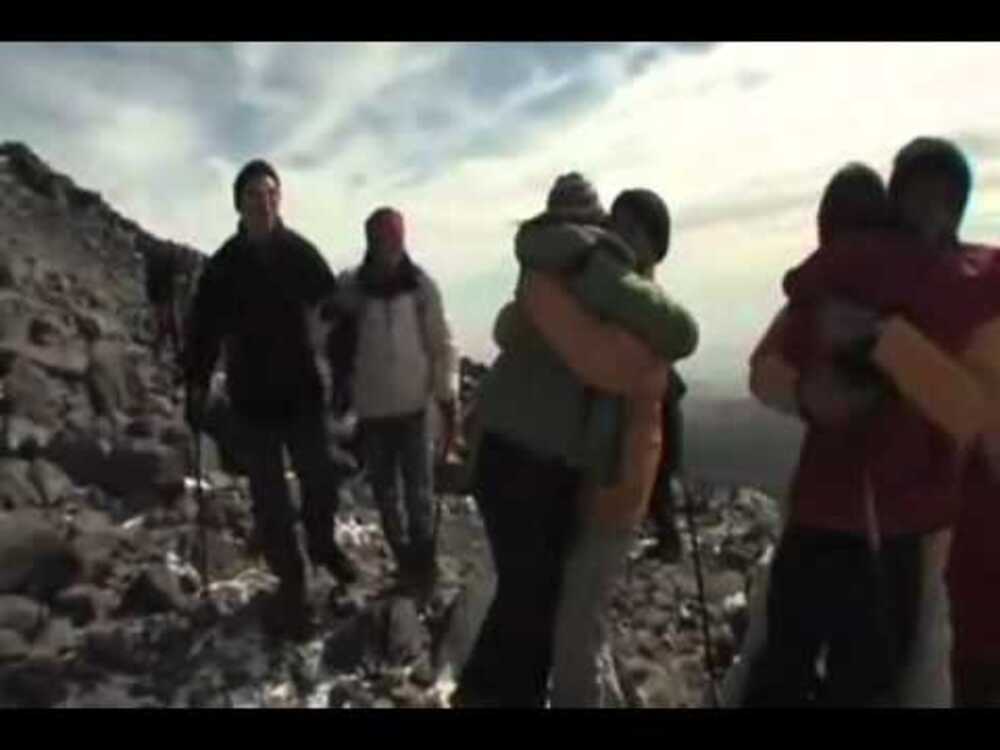
Source: TruthIsLife7/YouTube
This journey began when Yuen stumbled on a news article in the 1970s. The article reported a satellite photo of Mount Ararat in Turkey and supposedly showed the image of Noah’s Ark. This ignited their interest in the Ark’s existence, which led NAMI to undertake a journey to reveal the truth behind this ancient tale.
A Strategic Point
Mount Ararat is not only considered to be of grave military importance in terms of strategy, but it’s also very high up and near Turkey’s border with Iran, Armenia, and Azerbaijan. You can’t even visit the mountain if you’re an expert, you must have military clearance to enter the zones.
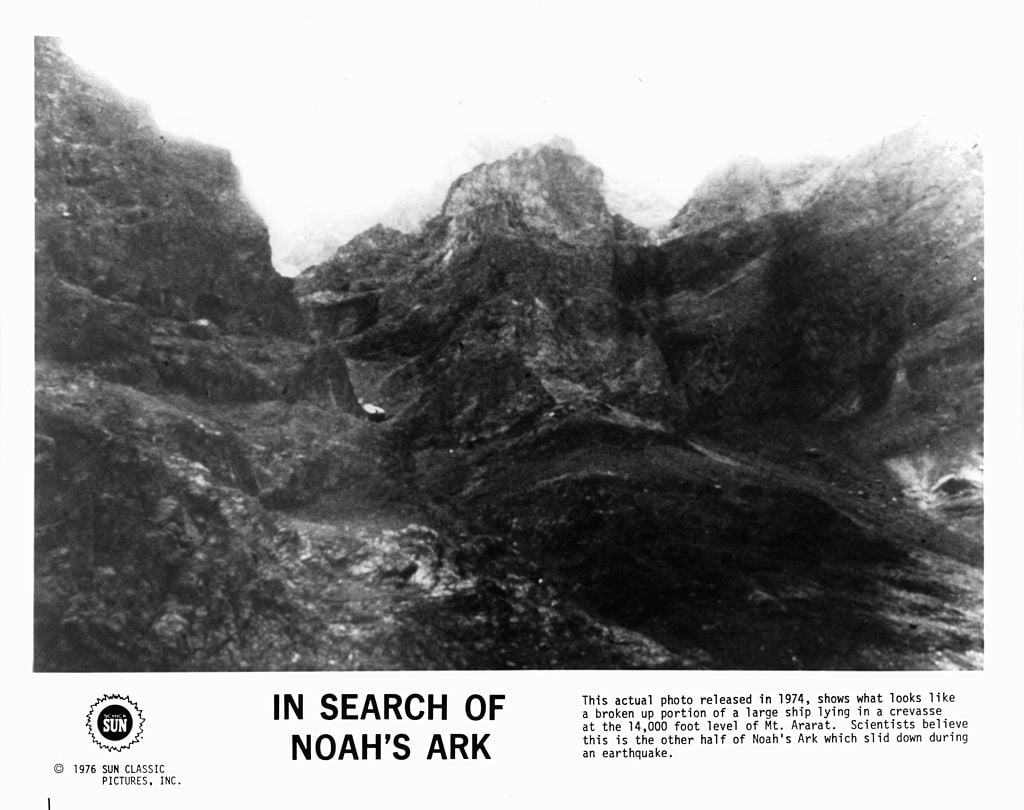
Source: Sun Classic Pictures/Getty Images
Many foreigners have an “Ararat Visa” to enter the mountain. Even if you do receive a special badge, you’re still only allowed to travel certain paths, which, if you wander away from them, can be deadly.
The Weather Was A Huge Issue
One NAMI team got their Ararat Visas and began their trek up the side of the mountain with the aid of a skilled local guide. The team was aware they were going to face dangerous weather conditions, and that’s what happened.
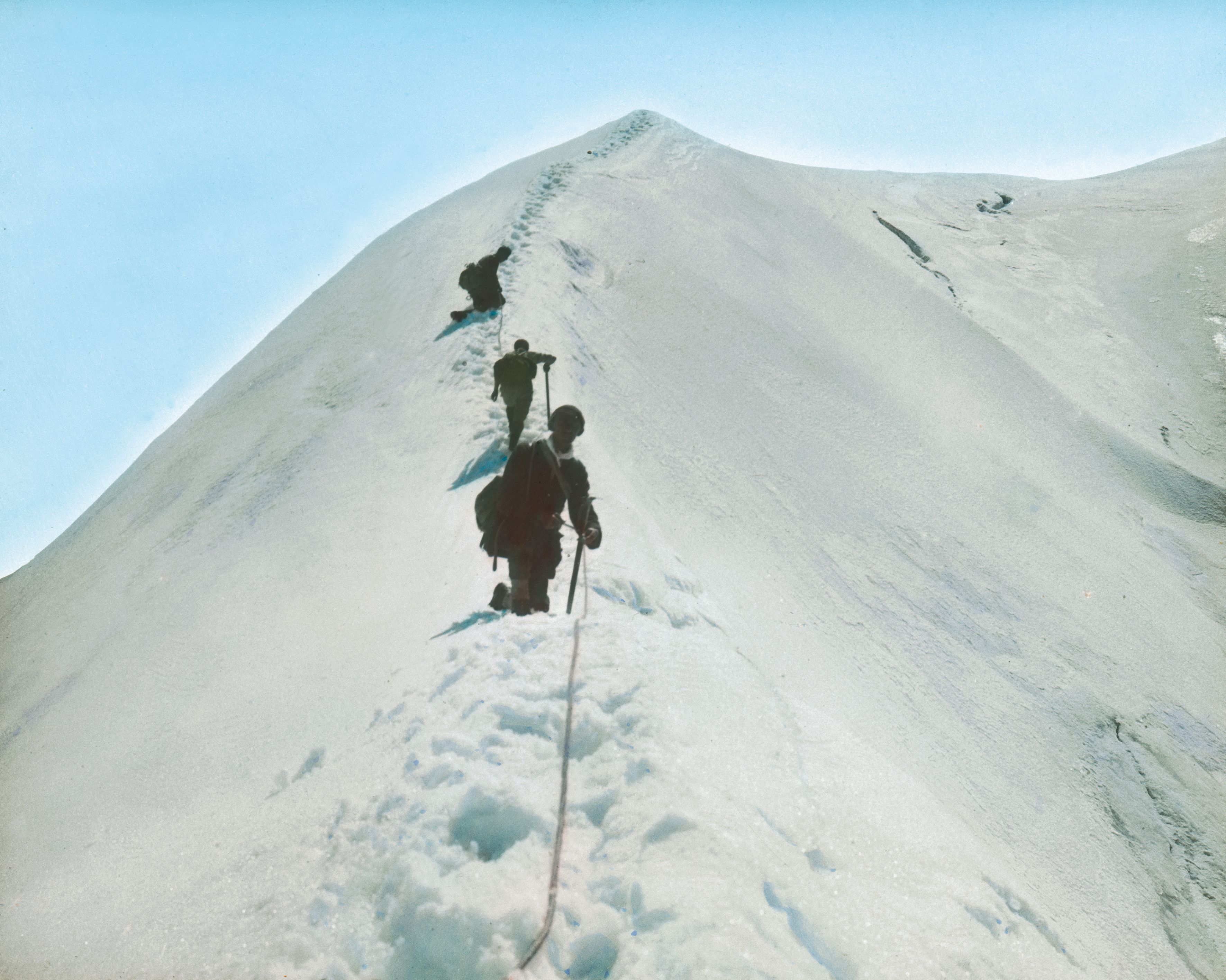
Source: Imagno/Getty Images
Despite the harsh weather, some adversity didn’t stop them. They were determined and convinced to find evidence of the Ark, so they kept going until they did.
They Found Something
The expedition team trudged through seven horrendous days of trekking, enduring miserable weather conditions, and running into some militants. Amazingly, they finally reached a whopping 4,000 meters.

Source: TPG/Getty Images
At that height, they discovered something remarkable – a cave. The cave, though, wasn’t even the best part of the discovery, it’s what resided in it. The team had maybe thought that they had finally come across what they’d been looking for!
A Wooden Structure
Much to their astonishment, the team did indeed find something rewarding after all they had been through. They had found a wooden structure.

Source: Paul A. Souders/CORBIS/Corbis via Getty Images
Man Fai-Yuen, one of the NAMI experts, stated, “The search team and I personally entered a wooden structure high on the mountain. The structure is partitioned into different spaces. We believe that the wooden structure we encountered is the same structure recorded in the historical accounts and the same ancient boat indicated by the locals.”
Accurate Dating Was Needed
The NAMI researchers had to use a specific carbon dating method in order to find out the accurate date of the wood discovered in the Mount Ararat cave. After processing the wood structure, they estimated that it was around 4,800 years old.
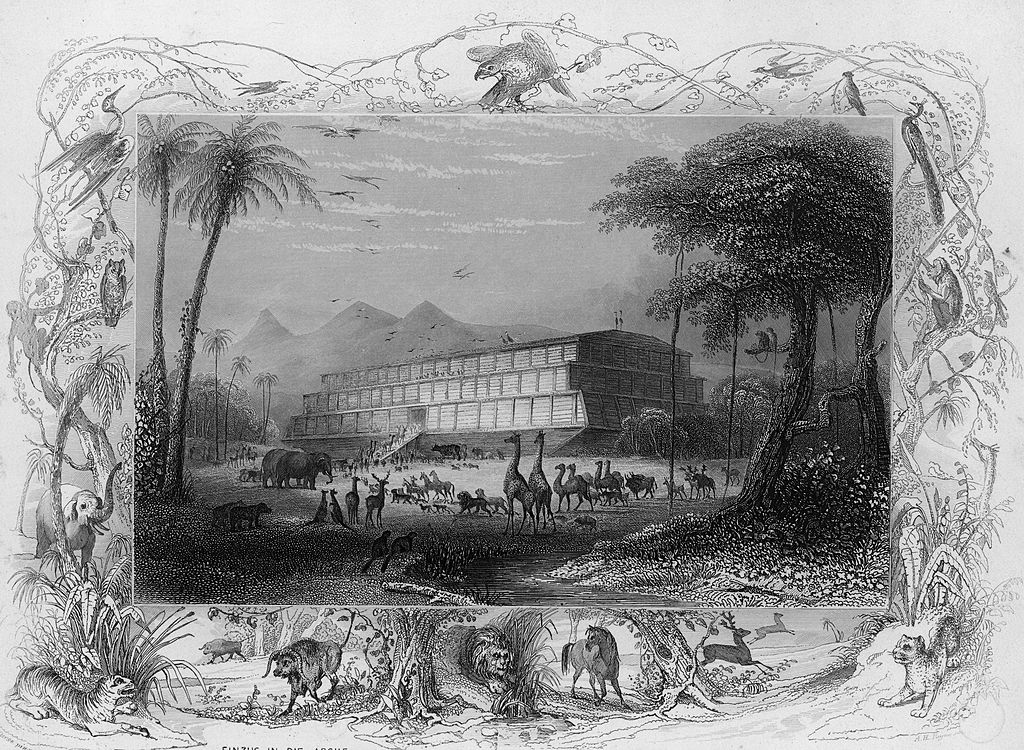
Source: Kean Collection/Getty Images
The next step after that was to figure out the materials’ origins. The Bible mentioned that the Ark was built from “gopher wood,” but experts weren’t exactly sure what was meant by that.
The Secret Behind Gopher Wood
The term “Gopher wood” was used in the Hebrew Bible only once, and it related to the construction of Noah’s Ark. It hasn’t been mentioned anywhere else in history, so it’s not entirely plausible to know what it truly is.

Source: VCG Wilson/Corbis via Getty Images
There are theories that have sprung up that it’s reeds, another that its wood is reinforced with tar, and another that it’s just some kind of tree. Even though finding out what “gopher wood” is isn’t truly important, it would be different if they had found a new type of wood altogether. That information would certainly help them.
Releasing Footage
In 2010, Nearly three years after NAMI explorers returned from their Ararat expedition, they released footage of their experiences there. It was suspected they did this to show the public before any formal publication was released.

Source: VCG Wilson/Corbis via Getty Images
The documented footage of what the explorers witnessed on the mountain caused some significant conversations. Experts from all around the world examined the video, and it wasn’t long before people had serious doubts about what they had seen.
Accusations Called It A Hoax
Not too long after the NAMI team released the videos from their expedition on Mount Ararat, people were quick to label the entire thing a hoax. The false accusations became rampant.

Source: Michel Porro/Getty Images
Some people claimed that the wooden beams in the footage were sourced from the Black Sea and brought by the guide to the mountain. There were others who believed that the structures had been built before the team arrived at the cave and started filming.
Confronting The Accusations
The NAMI team wasn’t just going to brush the issue aside, so they confronted it head-on. On their website, they divulged that they consulted with the Director of Cultural Ministries in Agri Province, Mushin Bulut about the accusations that the wood had been brought from elsewhere.

Source: Dean Conger/Corbis via Getty Images
Bulut responded that it would be impossible to carry “such an amount of timber to a strictly monitored area and to bring it up to an altitude of 4,000 meters.” Bulut’s response was taken directly from NAMI’s website.
The Actual Discovery Of Noah’s Ark Would Change Everything
Even if NAMI’s findings are true, it would take a lot of hard evidence to convince a large part of the scientific community. And even if some of the claims from the team are verified, the number of questions that still need answers is staggering.

Source: Fine Art Photographic Library/CORBIS/Corbis via Getty Images
One example is if the ancient biblical story of the Great Flood and the tale of Noah’s Ark are actually based on real events, and only a handful of people and animals are rescued, then an expansive study on biology, geology, and genealogy of the planet would have to be reconsidered.
The Problem With NAMI’s Findings
When it comes to biological research, there’s a big problem with NAMI’s findings. The problem is the myth about a boat in one location releasing all of the world’s surviving animals, while humans were still quite primordial.

Source: Space Frontiers/Getty Images
Since biologists heavily rely on DNA codes and sequences to track changes and compare them to fossils, the discovery of a global wipeout, along with the re-emergence of plants and wildlife, would mean that every single aspect of biology that we know to this day would be erroneous.
